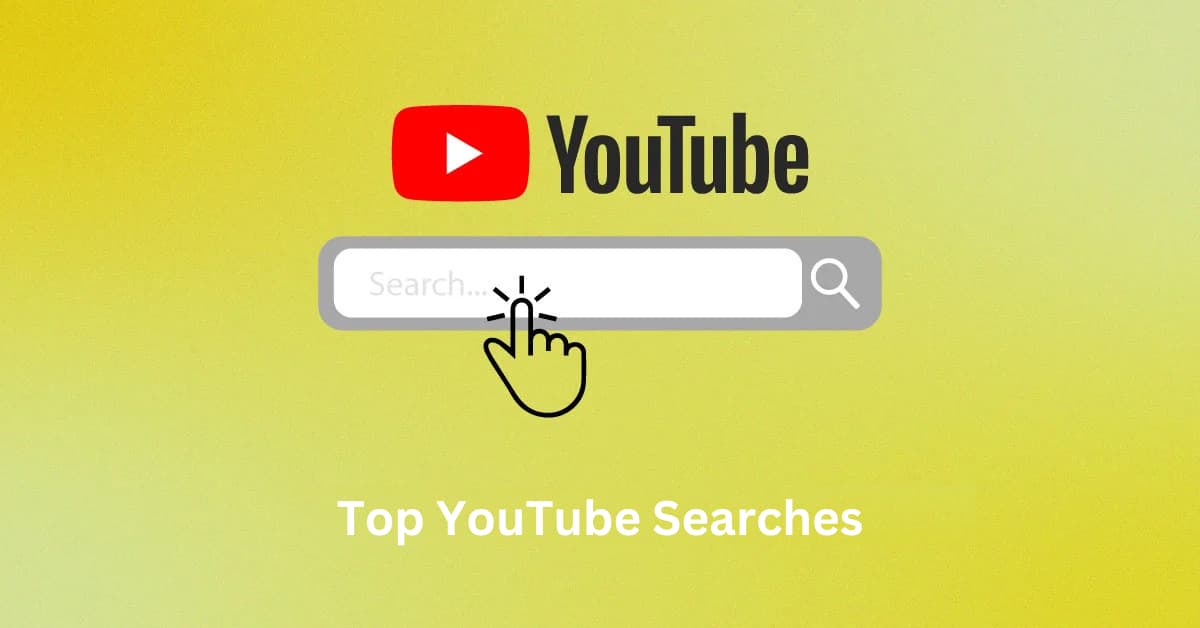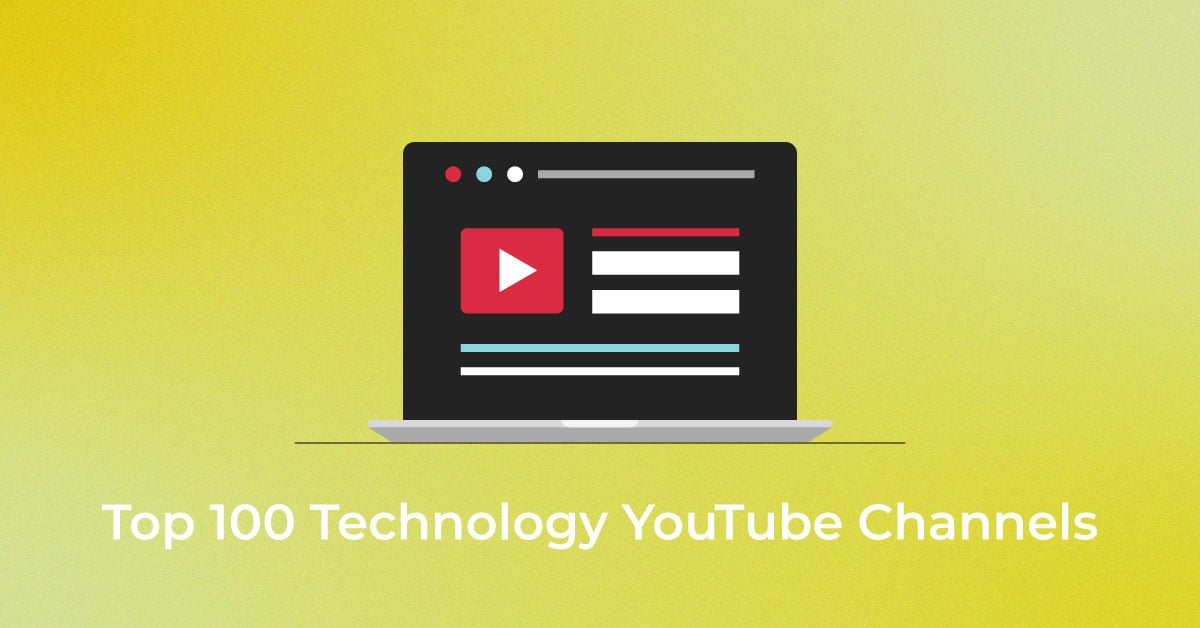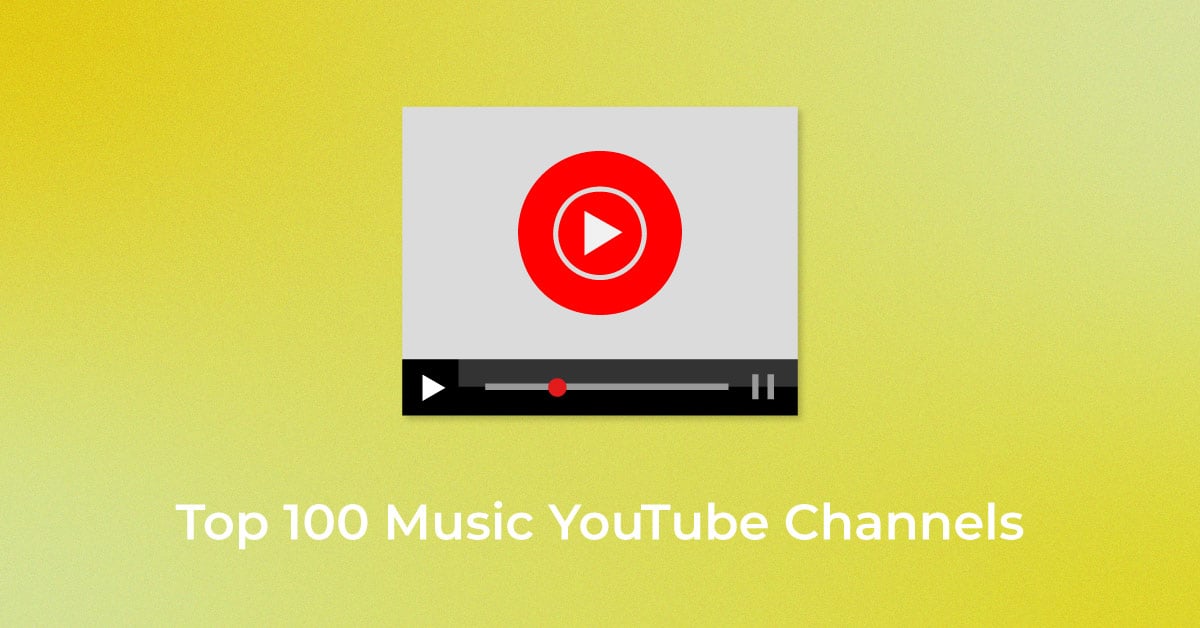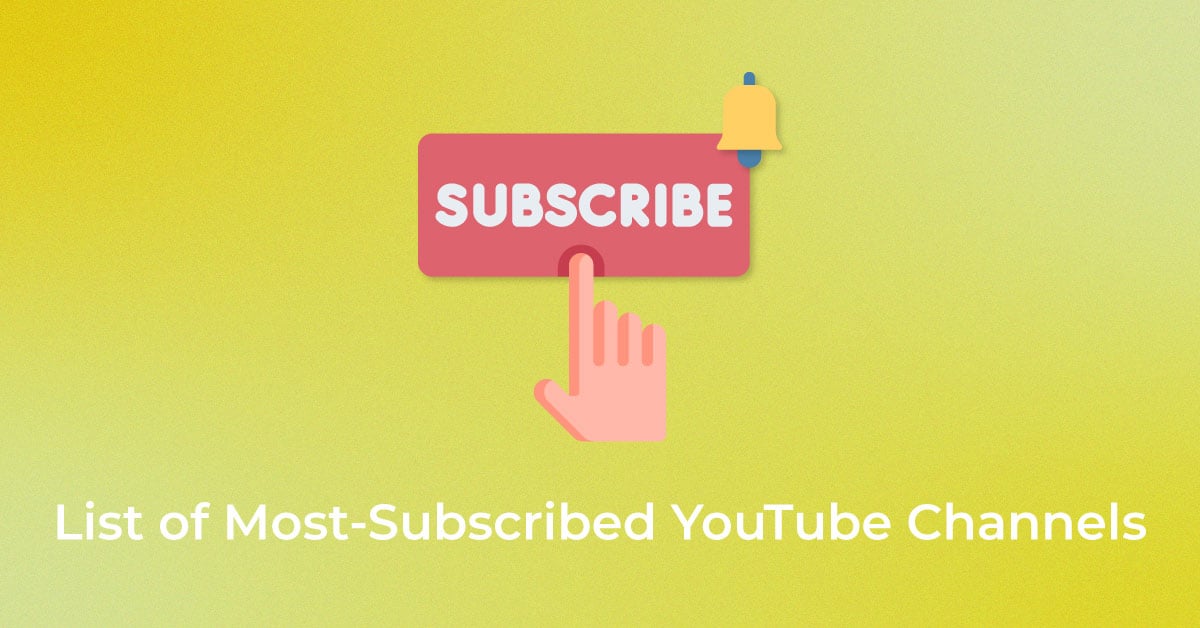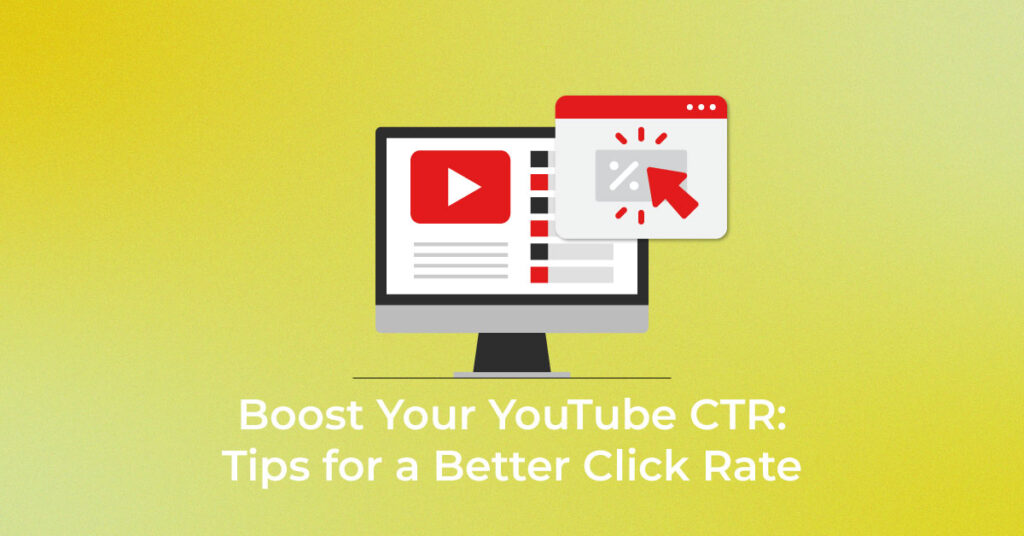Introduction to YouTube Click-Through Rate (CTR)
A high click-through rate (CTR) on YouTube is a critical factor in driving views and growing your channel. The thumbnail, title, and metadata of your video serve as the first impression, making it essential to craft them with precision. By leveraging expert YouTube SEO services, you can optimize these elements to make your content more appealing and discoverable. Additionally, professional SEO services ensure that your videos rank higher in search results, attracting more clicks and increasing audience engagement. Mastering these strategies not only boosts your CTR but also strengthens your channel’s overall performance and visibility.
Understanding the Role of CTR in YouTube Success
Click-Through Rate (CTR) on YouTube is the metric that shows the percentage of people who click on your video after seeing its thumbnail and title. A key player in YouTube’s algorithm, CTR determines not only viewership but also how often your content gets recommended. With every 1,000 impressions, a high number of clicks suggests to YouTube that your video is a candidate for promotion.
Why Higher CTR Matters for Your Channel
Higher Click-Through Rate (CTR) is crucial for your channel as it directly influences the number of viewers that engage with your content. Videos with high CTRs indicate to YouTube that your content is attractive and relevant, which can lead to better visibility and exposure. This can result in a virtuous cycle of growth: increased viewership leads to more engagement, which can then translate into a larger, more committed audience for your channel. Additionally, higher CTR can intensify ad impressions and potentially augment your earnings, marking it a pivotal metric for both content reach and financial success.
What is a good impression click-through rate?
A good impression click-through rate (CTR) on YouTube is one that falls within or above the average range provided by the platform. According to YouTube, half of all channels and videos have an impressions CTR that can range between 2% and 10%. Therefore, you should aim for at least a 6% CTR to be above average. However, the benchmark for “good” can vary based on specific channel size, content type, and audience demographics. Regularly analyzing your CTR over extended periods, such as 90 days, can help smooth out any anomalies and provide a more accurate representation of your video performance.
Crafting Thumb-Stopping Thumbnails
The Art of Thumbnail Design for Maximum Impact
In the realm of YouTube, your thumbnail is your first impression, your digital handshake, and your silent pitch, all at once. It’s the artful blend of images and text that can either invite an intrigued click or a disinterested scroll. For maximum impact, design thumbnails that are simple yet captivating. They should convey the essence of your video’s content while enticing viewers with the promise of value. A well-designed thumbnail stands out through its clarity, its promise of content value, and through invoking curiosity. Remember, your thumbnail is like a billboard for your video; it needs to catch the eye and spark interest in the bustling highway that is YouTube browsing.
Tips for Using Visual Cues to Increase Curiosity
Using visual cues effectively is critical in creating thumbnails that don’t just grab attention, but also pique curiosity. Here are some expert tips to enhance your thumbnail’s appeal:
- Simplify the scene: Avoid overcrowding the thumbnail with too many elements. Select 2-3 focal points that tell a story or hint at a narrative.
- Include expressive faces: Humans connect with emotions. Choose images with faces showing clear emotions to form an instant connection with potential viewers.
- Utilize contrasting colors: Make use of colors that pop and create contrast to ensure your thumbnails stand out against the white backdrop of YouTube’s interface.
- Employ curiosity gaps: Use imagery and text that suggest there’s more to the story, compelling viewers to click to satisfy their curiosity.
- Highlight the value: Whether through text overlays or visuals, make it clear what the viewer stands to gain by watching your video. This not only captures attention but also communicates the value they can expect to receive. By focusing on these aspects, you can effectively boost watching hours on your YouTube channel.
Each visual cue should aim to transform a casual scroller into an engaged viewer. Remember, the goal is to tease just enough information to kindle curiosity without giving everything away.
Writing Titles That Capture Attention
Balancing Relevance and Creativity in Titles
Balancing relevance with creativity in your YouTube titles is akin to walking a tightrope; it requires precision and skill. Aim for titles that reflect the content of your video accurately, yet offer a creative twist to entice viewers. Always keep in mind the search intent of your potential audience – the title should meet their expectations or pique their interest enough to click. To keep the title relevant, ensure the primary keywords relating to the video’s topic are included. However, infuse creativity by playing with words, asking intriguing questions, or adding a unique twist that makes your title stand out. The synergy between relevance and creativity in your titles will not only captivate but also retain viewership while ensuring your content’s discoverability on the platform.
Utilizing Keywords without Sacrificing Appeal
Keywords are the secret sauce to enhancing your video’s discoverability, but stuffing them haphazardly into your title can feel robotic and deter viewers. To effectively utilize keywords without sacrificing the appeal of your title, start with comprehensive keyword research using tools like Google Keyword Planner or TubeBuddy. Pinpoint keywords with a substantial search volume but lower competition, ensuring your title can stand out in search results.
Once you’ve selected your keywords, weave them into your title in a natural and compelling way. Imagine crafting a storyline in just a few words – your title should entice viewers by highlighting the value or emotion of the video content, with keywords embedded seamlessly. Additionally, consider using hashtags to expand the reach and engagement of your video by targeting specific topics or trends relevant to your content.
The strategic inclusion of keywords can significantly boost your CTR (Click-Through Rate) as it aligns with what viewers are actively searching for, all while maintaining the allure that prompts a viewer’s curiosity and gets them to click.
Optimizing Video Descriptions
Encouraging Clicks with Engaging Description Copy
The video description is your chance to expand on the invitation your title and thumbnail have begun. Engaging description copy is a balanced composition of informative and persuasive language that not only informs viewers about your video’s content but also entices them to watch. Begin with a compelling hook — a line or two that amplifies the intrigue presented in your title. Continue by succinctly outlining the video’s value proposition, emphasizing what makes your content unique and why it’s a must-watch.
Consider employing storytelling techniques, vivid imagery, or evocative questions to draw readers in. And always remember to keep it clear, concise, and structured for ease of reading. Your description should not only encourage clicks but also set the tone for viewer engagement once they’ve committed to watching your video. Additionally, make sure to align with the YouTube Algorithm by using relevant keywords and optimizing the description to enhance discoverability.
How to Incorporate Calls-to-Action Effectively
Incorporating Calls-to-Action (CTAs) is about guiding your viewers on what steps to take next after they’ve interacted with your video content. You’ll want them to remain engaged and take an action that benefits your channel’s growth, like subscribing, watching more videos, or following your social media profiles.
To make your CTAs effective:
- Be clear and concise: Directly state the action you want viewers to take, using as few words as possible. Avoid vague language.
- Limit the number of CTAs: Choose one or two primary actions to avoid overwhelming your viewers.
- Align CTA with viewer value: Your CTA should offer something beneficial or of interest to the viewer, like more content or in-depth details.
- Include CTAs at the right time: Place your CTA at a point where engagement is high, often at the beginning or towards the end of the video.
- Make use of visuals and audio cues: Visually highlight your CTA with text overlays or graphics, and verbally reinforce them during your video.
Always be testing different CTA strategies to see what resonates best with your audience. Tracking the outcomes helps you refine your approach for better viewer response.
Leveraging YouTube’s Features to Boost CTR
Using Cards and End Screens to Promote More Views
Cards and End Screens are powerful features offered by YouTube to keep viewers hooked on your content. To make the most out of cards, sprinkle them throughout your video at strategic points where viewers are most engaged, like right after delivering value or just before a transition. They might link to related content, other playlists, your website, or prompt a channel subscription. Make sure the cards are visually appealing and aligned with the video content for relevance.
End Screens are particularly impactful, showcasing clickable thumbnails for other videos, playlists, or prompting subscriptions when viewer attention is high at the end of a video. To optimize, customize your End Screens to match your branding, and carefully select content that is most likely to interest your audience based on the current video.
Using these features effectively can weave a seamless viewing experience, gently nudging viewers down your content rabbit hole and significantly boosting your overall Click-Through Rate (CTR).
Annotations: A Tool to Highlight and Engage
Annotations were once a nifty YouTube tool allowing you to layer text, links, and hotspots over your video content to engage your audience directly. However, YouTube discontinued annotations in January 2019, shifting focus to Cards and End Screens, mobile-friendly tools that serve similar purposes.
In lieu of annotations, you can employ Cards to subtly draw attention to additional videos, polls, or your website, without disrupting the viewing experience. Strategically place them to complement the video content and offer viewers more value.
End Screens, on the other hand, are excellent for promoting up to four pieces of content as your video wraps up. They can capture viewers’ attention who have already watched your content all the way through, indicating higher interest and engagement.
To truly engage your viewers, consider these tools as part of a robust engagement strategy, ensuring whenever you direct your audience to additional content or actions, it’s at a moment when they are most receptive.
Timing and Consistency: Your Publishing Strategy
How Posting Times Can Influence CTR
The timing of your YouTube post can have a surprising impact on your video’s Click-Through Rate (CTR). Publishing your video when your audience is most active means there’s a higher chance they’ll see and click on your content. Each audience may have different peak times depending on varying factors like demographics, content niche, and time zones.
To find the optimal time to post, consider analyzing your YouTube analytics to discover when your viewers are online. Look for patterns in successful past posts for clues on timing. If you’re just starting out or lack sufficient data, you can begin by posting on typical peak usage times, like evenings and weekends in your target audience’s local time, and adjust based on the performance of these videos.
Remember, consistency is key. Once you’ve identified high-engagement windows, maintain a consistent posting schedule during these times to establish a routine that your audience can rely on.
Building a Loyal Audience with a Consistent Schedule
Consistency in your posting schedule is a fundamental aspect of building a loyal audience on YouTube. The more reliably you post content, the more viewers can incorporate your videos into their routines. As viewers begin to anticipate your next release, there is an increase in the likelihood they will return, boosting your views and CTR.
To set up a consistent schedule:
- Identify how often you can realistically post without sacrificing content quality.
- Announce your posting schedule to your audience and stick to it.
- Use scheduling features on YouTube to automate your postings for peak times.
- Evaluate your capacity for producing content and set a frequency that is sustainable for you, whether it’s weekly, bi-weekly, or monthly.
By sticking to this schedule, you cultivate an audience habit, reinforcing the connection between their routine and your content. Your regular uploads can become a part of their YouTube ritual, and viewers may start to eagerly await your next video, a win-win situation for audience satisfaction and CTR.
Engaging with Your Viewers
Fostering Community Through Comments
Fostering a community through your video comments is like opening your channel’s door to welcome viewers into an ongoing conversation. Engaging with your audience in the comments section not only shows them that you appreciate their thoughts and feedback, but also encourages others to contribute, creating a sense of belonging and loyalty.
Promptly replying to comments, especially soon after a video is posted, demonstrates your commitment to the viewer experience and can incentivize viewers to return and engage more. Additionally, threaded conversations among viewers can offer insights into their preferences and what content resonates with them.
To facilitate a thriving community in your comments section:
- Encourage viewers to comment by asking questions in your videos.
- Highlight or pin the most interesting or insightful comments.
- Address negative comments constructively to maintain a positive atmosphere.
- Consider creating comment-based content, such as Q&A or reaction videos, to further the engagement.
Through active participation in your comments section, you not only foster a vibrant and inclusive community but also potentially boost your channel’s CTR and overall success on YouTube.
Increasing Viewer Retention with Interactive Content
Increasing viewer retention is about keeping the audience interested and engaged throughout your video – and interactive content plays a pivotal role in this challenge. By integrating interactive elements into your videos, you invite viewers to take an active role in their viewing experience, which can both capture and hold their attention longer.
Here’s how you can enhance viewer retention:
- Incorporate polls or surveys directly in your videos using Cards to gauge viewer opinion and preference.
- Create video paths by encouraging viewers to choose their own journey through linked videos.
- Quiz your audience or host live trivia sessions during premieres or live streams.
- Engage viewers with call-and-response tactics, such as asking them to type a specific comment if they agree with a point you’re making.
Remember, the more you can make viewers feel like a part of the video, rather than just an observer, the more invested they will be in your content, thereby increasing retention rates and boosting your overall CTR.
Analyzing and Adjusting Your Strategy
Tracking Your Metrics: What to Look For
To stay on top of your YouTube channel’s performance, it’s crucial to keep a keen eye on key metrics that provide insights into your content’s success. These metrics go beyond just views and likes; they delve into how viewers interact with your content and what that means for your growth strategy.
Look for these vital signs:
- Watch Time: Measures the total amount of minutes viewers have spent watching your videos. High watch time signals engaging content.
- Audience Retention: Reveals at what point viewers are dropping off or skipping. Aim for high retention to indicate content that keeps viewers hooked.
- Engagement: Includes likes, comments, shares, and subscribes. High engagement rates imply that viewers find your content worth interacting with.
- Demographics: Provides data on the age, gender, location, and even device type of your audience. Demographics can inform you on how well you’re reaching your target audience.
- Click-Through Rate (CTR): The percentage of viewers who click on your video after seeing the thumbnail. A higher CTR suggests effective titles and thumbnails.
By closely monitoring these metrics regularly, you can adjust your content strategy to improve performance and viewer satisfaction.
Fine-Tuning Your Approach Based on Analytics Data
Refining your YouTube strategy with data analytics allows you to make informed decisions that can lead to better content, happier viewers, and increased CTR. Use YouTube Analytics as your compass, guiding tweaks and overhauls to your content creation process.
To fine-tune your approach:
- Analyze the performance metrics of individual videos and look out for patterns in content that resonates versus that which falls flat.
- Examine the Audience Retention graphs to pinpoint where viewers lose interest, and adjust your video structure accordingly.
- Assess the demographics data to ensure your content is reaching the intended audience, adjusting your communication style and topics if necessary.
- Test different thumbnail and title combinations, and track changes in CTR to identify what captures the most attention.
- Observe the traffic source report to understand where your viewers are coming from and optimize content for those platforms or search terms.
Regularly reviewing and implementing changes based on this data ensures your content remains dynamic and responsive to your audience’s preferences, ultimately driving increased CTR.
Advanced Strategies to Elevate Your YouTube CTR
Exploring Different Video Formats and Their Impacts on CTR
Exploring a variety of video formats is akin to adding different spices to a meal; each format offers a unique flavor that can entice different audience segments. Tutorials, how-tos, and explainer videos often attract viewers seeking practical knowledge, potentially increasing your CTR with their clear value proposition. On the other hand, vlogs and behind-the-scenes content can foster a personal connection, making viewers more likely to click for a glimpse into your world.
Listicles and countdowns capitalize on the audience’s curiosity and desire for easily digestible content, often resulting in higher CTRs due to their straightforward format. Meanwhile, webinars and in-depth interviews can appeal to viewers interested in a comprehensive understanding of a certain topic, offering depth that may lure a click from an invested audience.
Experimenting with live streams, Q&As, and interactive videos can directly engage your viewers in real-time and add a sense of immediacy to your content. Each format’s impact on CTR can be significant, as long as it resonates with your audience’s interests and viewing preferences. Keep trying different formats and track the performance analytics to determine which types increase your CTR the most.
Collaborations and Cross-Promotions to Expand Reach
Collaborations and cross-promotions are a dynamic way to expand your reach and enhance your Click-Through Rate (CTR) on YouTube. By partnering with other creators, you can tap into their audience, introducing your content to potential new subscribers who might click on your video out of interest in the collaborator. At the same time, the collaborator’s viewers may share a high intent to engage with your content, thus boosting your CTR.
When engaging in cross-promotions, you benefit from the combined marketing efforts. It can be as simple as sharing each other’s content on social media or as involved as creating joint content series that highlight both parties. Cross-promoting content on other platforms can also expose you to diverse audiences and drive cross-platform traffic to your YouTube videos.
For best results:
- Choose collaborators with audiences that have overlapping interests with your own.
- Ensure a clear value proposition for viewers in your collaborative content to drive clicks.
- Design visually cohesive cross-promotional materials that can generate interest among audiences of all parties involved.
Cross-promotions and collaborations offer a multiplier effect — not only are you reaching new eyeballs, but you’re also gaining credibility through association and potentially improving your CTR as a result.
FAQs
What Is Considered a Good Click-Through Rate on YouTube?
A good Click-Through Rate (CTR) on YouTube generally falls between 5% to 20%. The average CTR will vary depending on numerous factors such as the niche, audience demographic, and the individual channel’s engagement level. If your videos maintain a CTR within this range, they’re likely performing well in terms of drawing viewers in from impressions. However, always aim to be in the upper tier of this range to maximize visibility and audience growth.
How Can I See My Video’s CTR in YouTube Studio?
To see your video’s Click-Through Rate (CTR) in YouTube Studio, follow these steps:
- Log in to your YouTube account and click your profile picture to access YouTube Studio.
- In the left menu, select ‘Analytics’.
- Choose ‘Reach’ from the top menu.
- Look for the ‘Impressions click-through rate’ graph for your CTR data.
You can adjust the time period to analyze your CTR over different time frames for more insights.
Can Too Much Focus on CTR Negatively Affect My Content Quality?
Prioritizing CTR can indeed overshadow content quality if not balanced correctly. While a high click-through rate can drive more traffic to your videos, focusing solely on metrics can lead to clickbait or neglecting viewer value. Always remember that genuine audience engagement and retention are built on delivering high-quality, valuable content that matches viewers’ expectations set by the title and thumbnail.
What Are the Most Common Mistakes Creators Make Regarding CTR?
Common mistakes creators make regarding CTR include using misleading titles or thumbnails, neglecting the importance of keyword research, overlooking the design aspects of thumbnails, not optimizing video descriptions and titles for search and viewer interest, and failing to test and analyze different strategies. It’s key to align your content and metadata to foster trust and maintain viewer engagement, which in turn can naturally enhance CTR.
Popular Searches
How useful was this post?
0 / 5. 0










